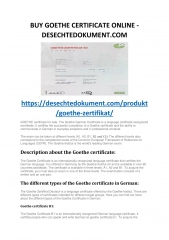Principles and Frameworks for Exercise Prescription Certificate Course Session 2
This session delves into the principles and frameworks for exercise prescription, focusing on topics such as prescribing aerobic exercise, the FITT principle, global recommendations for physical activity, and practical aerobic exercise examples. It also covers the benefits of regular physical activity, the process of exercise prescription, and the definition of aerobic exercise. Co-organizers, supported by, and sponsored by are highlighted throughout the session.
Download Presentation

Please find below an Image/Link to download the presentation.
The content on the website is provided AS IS for your information and personal use only. It may not be sold, licensed, or shared on other websites without obtaining consent from the author.If you encounter any issues during the download, it is possible that the publisher has removed the file from their server.
You are allowed to download the files provided on this website for personal or commercial use, subject to the condition that they are used lawfully. All files are the property of their respective owners.
The content on the website is provided AS IS for your information and personal use only. It may not be sold, licensed, or shared on other websites without obtaining consent from the author.
E N D
Presentation Transcript
Exercise Prescription Certificate Course Session 2: Principles and Frameworks for Exercise Prescription Co-organised by: Supported by: Sponsored by:
Outline of this Session Overview of Exercise Prescription Principles of Prescribing Aerobic Exercise The FITT Principle including assessments on Activity Intensity Global Recommendations on Physical Activity for Health Recommendations for Prescribing Exercise to Healthy Adults Recommendations for Prescribing Exercise to Older Adults Practical Examples of Aerobic Exercises Co-organised by: Supported by: Sponsored by:
Overview of Exercise Prescription Co-organised by: Supported by: Sponsored by:
What We Know from Research Regular PA reduces the risk of many adverse health outcomes Health benefits occur for all age and racial group, as well as people with disabilities Benefits of PA far outweigh the possibility of adverse outcomes Some physical activity is better than none Both aerobic and muscle-strengthening (resistance) PA are beneficial Most health benefits occur with at least 150 mins a week of moderate-intensity PA. Additional benefits occur as the amount of PA increases Co-organised by: Supported by: Sponsored by:
What is Exercise Prescription? The process of designing a regimen of PA for a client/patient in a systematic and individualized manner for a specified purpose Based on specific and unique needs and interests of the client/patient, as well as results of their clinical assessments The goal should be successful integration of exercise principles and behavioral techniques that motivates the participant to be compliant, thus achieving their purpose Co-organised by: Supported by: Sponsored by:
Principles of Prescribing Aerobic Exercise Co-organised by: Supported by: Sponsored by:
Definition of Aerobic Exercise Any activity that uses large muscle groups, can be maintained continuously, and is rhythmical in nature Co-organised by: Supported by: Sponsored by:
FITT FIVE Essential Components of Prescribing Aerobic Exercise Frequency Intensity Time (Duration) Type Progression Dosage of Exercise Co-organised by: Supported by: Sponsored by:
FITT The Frequency of Prescribed Aerobic Exercise Usually expressed as the number of days per week dedicated to an exercise session E.g. 5 times per week Co-organised by: Supported by: Sponsored by:
FITT The Intensity of Prescribed Aerobic Exercise Refers to how hard a person works to do the activity Moderate-intensity: can talk, but not sing Vigorous-intensity: cannot say more than a few words without pausing for a breath Other Methods for Assessing Aerobic Intensity: Metabolic equivalents (METs) %HRmaxOR %HRR %VO2maxOR %VO2R Ratings of perceived exertion (RPE) Co-organised by: Supported by: Sponsored by:
FITT The Intensity of Prescribed Aerobic Exercise - METs METs express aerobic intensity as mL/kg of body weight/min of oxygen being consumed 1 MET is the rate of energy expenditure while sitting at rest (by convention: oxygen uptake of 3.5 mL/kg/min) Intensity Classification by METs: Light 1.1-2.9 METs Moderate 3-5.9 METs Vigorous 6 METs Co-organised by: Supported by: Sponsored by:
FITT The Intensity of Prescribed Aerobic Exercise by METs Co-organised by: Supported by: Sponsored by:
FITT The Intensity of Prescribed Aerobic Exercise by METs Co-organised by: Supported by: Sponsored by:
FITT The Intensity of Prescribed Aerobic Exercise by METs Co-organised by: Supported by: Sponsored by:
FITT The Intensity of Prescribed Aerobic Exercise by %HRR or %HRmax Aerobic intensity can be expressed as a % of one s: Maximum heart rate (%HRmax) OR Heart rate reserve (%HRR) HRmax: estimated by person s age by 220 age (applied to adults 19 year-old only), or some other prediction equation HRR: HRR = HRmax Resting HR Co-organised by: Supported by: Sponsored by:
FITT The Intensity of Prescribed Aerobic Exercise by %HRR or %HRmax Co-organised by: Supported by: Sponsored by:
FITT The Intensity of Prescribed Aerobic Exercise by %VO2max/%VO2R Aerobic intensity can be expressed as a percentage of a person s: Maximal oxygen uptake/aerobic capacity (%VO2max) Oxygen uptake reserve (%VO2R) The person s VO2max& VO2R could be estimated by an exercise test Co-organised by: Supported by: Sponsored by:
FITT The Intensity of Prescribed Aerobic Exercise by %VO2R Co-organised by: Supported by: Sponsored by:
FITT The Intensity of Prescribed Aerobic Exercise by RPE An index of how hard the person feels he or she is exercising (e.g. a 0 to 10 scale) Borg RPE Scale A scale ranges from 6 to 20, where 6 means "no exertion at all" and 20 means "maximal exertion preferred method to assess intensity among those individuals who take medications that affect heart rate or pulse Co-organised by: Supported by: Sponsored by:
FITT The Intensity of Prescribed Aerobic Exercise by RPE (a 0 to 10 scale) Co-organised by: Supported by: Sponsored by:
FITT The Time of Prescribed Aerobic Exercise Refers the length of time in which an activity or exercise is performed Time (Duration) is generally expressed in minutes e.g. 30 min/day or 150 min/week Co-organised by: Supported by: Sponsored by:
FITT The Type of Prescribed Aerobic Exercise The mode of exercise performed Some require little skill to perform e.g. brisk walking, leisure cycling, swimming, aqua- aerobics and slow dancing Some generally perform at a higher activity intensity e.g. jogging, running, aerobics, stepping exercise, fast dancing Co-organised by: Supported by: Sponsored by:
The Progression of Prescribed Aerobic Exercise Recommended Sequence of Progression of Aerobic Exercises Co-organised by: Supported by: Sponsored by:
FITT FIVE Essential Components of Prescribing Aerobic Exercise Frequency Intensity Time (Duration) Type Progression Dosage of Exercise Co-organised by: Supported by: Sponsored by:
Aerobic Exercise Volume Recommendation Target volume: > 500-1000 MET-min / wk Approximately equal to 1000 kcal / wk of moderate intensity PA 150 min / wk of moderate intensity PA 5,400-7,900 steps / d kcal / min = [(METs x 3.5 mL/kg/min x body weight, kg) / 1000)] x 5 Co-organised by: Supported by: Sponsored by:
Global Recommendations on Physical Activity for Health Co-organised by: Supported by: Sponsored by:
Co-organised by: Supported by: Sponsored by:
Recommendations for Prescribing Aerobic Exercise to Healthy Adults Co-organised by: Supported by: Sponsored by:
Recommendations for Prescribing Aerobic Exercise to Healthy Adults Frequency: Perform moderate-intensity aerobic PA on at least 5 days/wk or vigorous PA on at least 3 days/wk, or a weekly combination of 3-5 days/wk of moderate- and vigorous exercise Intensity: A combination of moderate and vigorous-intensity aerobic exercise is recommended Co-organised by: Supported by: Sponsored by:
Recommendations for Prescribing Aerobic Exercise to Healthy Adults Time: Perform moderate-intensity exercise for at least 30 min/d to a total of at least 150 min/wk OR vigorous intensity exercise for at least 20 min/d to a total of at least 75 min/wk. (in bouts of 10 min) To health benefits, increase duration to 300 min/wk of moderate-intensity, OR 150 min/wk of vigorous- intensity exercise (or an eq. combination of both) PA beyond this amount may further health benefits Co-organised by: Supported by: Sponsored by:
Recommendations for Prescribing Aerobic Exercise to Healthy Adults Type: *Typically performed in vigorous intensity Co-organised by: Supported by: Sponsored by:
Special Considerations physical activity gradually over time whenever more activity is necessary to meet recommendations Inactive people should start low and go slow Terminate exercise immediately and seek prompt medical care if warning signs or symptoms develop during or after exercise Co-organised by: Supported by: Sponsored by:
Prescribing Aerobic Exercise to Healthy Older Adults Co-organised by: Supported by: Sponsored by:
Long Term Benefits of Exercise Moderate to strong Evidence Better functional health (for older adults) Reduced abdominal obesity Moderate Evidence Reduced symptoms of depression Lower risk of hip fracture Lower risk of lung cancer Lower risk of endometrial cancer Weight maintenance after weight loss Increased bone density Improved sleep quality Strong Evidence Lower risk of premature death Lower risk of CHD, stroke Lower risk of type 2 DM & HT Lower risk of adverse blood lipid & metabolic syndrome Lower risk of colon & breast cancer Weight loss & Prevention of weight gain Prevention of falls Reduced depression Better cognitive function Co-organised by: Supported by: Sponsored by:
Recommendations for Prescribing Exercise to Healthy Older Adults Definition of Older Adult People with age 65 years People 50-64 years with clinically significant conditions or physical limitations that affect movement, physical fitness, or physical activity Positive improvements from PA are attainable at any age Those who cannot perform the recommended amount of PA because of chronic conditions should Be as physically active as their abilities / conditions allow AND Avoid being sedentary Co-organised by: Supported by: Sponsored by:
Recommendations for Prescribing Aerobic Exercise to Healthy Older Adults Frequency: Perform moderate-intensity aerobic PA on 5 days/wk or vigorous PA on at least 3 days/wk, or a weekly combination of 3-5 days/wk of moderate- and vigorous exercise Intensity: A combination of moderate and vigorous-intensity aerobic exercise is recommended (Use of RPE preferable) Co-organised by: Supported by: Sponsored by:
Recommendations for Prescribing Aerobic Exercise to Healthy Older Adults Frequency: Perform moderate-intensity aerobic PA on 5 days/wk or vigorous PA on at least 3 days/wk, or a weekly combination of 3-5 days/wk of moderate- and vigorous exercise Intensity: A combination of moderate and vigorous-intensity aerobic exercise is recommended (Use of RPE preferable) Similar to Recommendations for Health Adults Co-organised by: Supported by: Sponsored by:
Recommendations for Prescribing Aerobic Exercise to Healthy Older Adults Time: Perform moderate-intensity exercise for 30 min/d to a total of 150 min/wk OR vigorous intensity exercise for 20 min/day to a total of 75 min/wk. (in bouts of 10 min) To health benefits, increase duration to 300 min/wk of moderate-intensity, OR 150 min/wk of vigorous- intensity exercise (or an eq. combination of both) Co-organised by: Supported by: Sponsored by:
Recommendations for Prescribing Aerobic Exercise to Healthy Older Adults Time: Perform moderate-intensity exercise for 30 min/d to a total of 150 min/wk OR vigorous intensity exercise for 20 min/d to a total of 75 min/wk. (in bouts of 10 min) To health benefits, increase duration to 300 min/wk of moderate-intensity, OR 150 min/wk of vigorous- intensity exercise (or an eq. combination of both) Same as the Recommendations for Health Adults Co-organised by: Supported by: Sponsored by:
Recommendations for Prescribing Aerobic Exercise to Healthy Older Adults Type: *Typically performed at a vigorous intensity and recommended for those who exercise regularly or who are at least of average physical fitness Co-organised by: Supported by: Sponsored by:
Recommendations for Prescribing Aerobic Exercise to Healthy Older Adults Type: Similar with that for Health Adults, except: Exercise that does not impose excessive orthopaedic stress is preferable *Typically performed at a vigorous intensity and recommended for those who exercise regularly or who are at least of average physical fitness Co-organised by: Supported by: Sponsored by:
Special Precautions for Healthy Older Adults PA Intensity and duration should be low at the beginning in particular for those are highly de-conditioned, functionally limited, or have chronic conditions that affect their ability to perform physical tasks For resistance training involving use of weight- lifting machines, initial training sessions should be supervised and monitored by personnel who are sensitive to special needs of older adults Co-organised by: Supported by: Sponsored by:
Special Precautions for Healthy Older Adults Progression of activities should be individualized and tailored to tolerance and preference In the early stages of exercise programme, muscle strengthening activities may need to precede aerobic exercise among very frail individuals Co-organised by: Supported by: Sponsored by:
45 Further Reading Hong Kong Reference Framework for Preventive Care for Older Adults in Primary Care Settings http://www.pco.gov.hk/englis h/resource/professionals_pre ventive_older_pdf.html Co-organised by: Supported by: Sponsored by:
Some Practical Examples of Aerobic Exercise Co-organised by: Supported by: Sponsored by:
End of Presentation Please refer to Doctor s Handbook: Chapters 4-5 for further reading Co-organised by: Supported by: Sponsored by:
Questions and Answers Co-organised by: Supported by: Sponsored by:























